Are you ready to unlock significant savings and enhance the quality of your project? Our contractor value engineering proposal is designed to identify innovative solutions that maximize efficiency while minimizing costs. By carefully analyzing each phase of the construction process, we can streamline operations and deliver exceptional results. Join us as we explore how these strategies can benefit your projectâlet's dive into the details!
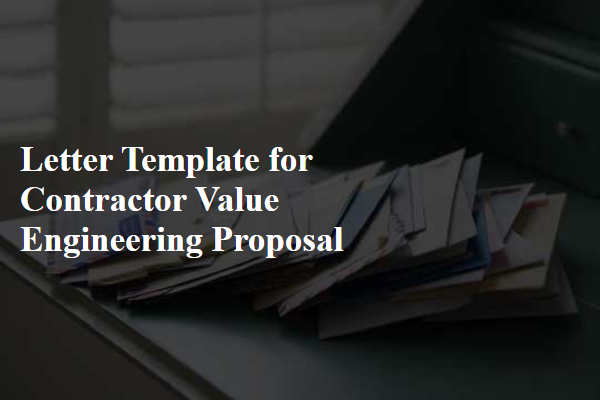
Project Overview and Background
The construction project, named Skyline Tower Development, located in downtown Seattle, Washington, encompasses the development of a 50-story mixed-use high-rise, featuring residential units, commercial space, and rooftop amenities. The overall budget for this project is approximately $200 million, aiming for completion by December 2025. The design prioritizes sustainability, seeking LEED Gold certification, which necessitates innovative approaches to reduce costs while maintaining quality. This value engineering proposal intends to analyze the existing plans to optimize material usage, labor efficiency, and construction methods, ultimately enhancing project viability and sustainability without compromising safety standards. Key stakeholders include the city council, local business associations, and various environmental advocacy groups, highlighting the importance of community engagement throughout the building process.
Proposed Value Engineering Changes
Proposed value engineering changes aim to enhance project efficiency while reducing costs. Cost-saving strategies may include switching materials from traditional concrete to high-performance alternatives like precast concrete, which can lower labor requirements significantly by enabling faster installations. Design modifications such as simplifying structural components can decrease material costs and shorten construction timelines. Implementing advanced technologies, like Building Information Modeling (BIM), can optimize the project's workflow and mitigate potential delays. These changes support both immediate budget reductions and long-term operational efficiencies, ultimately maximizing the project's overall value without compromising quality or safety standards.
Cost-Benefit Analysis
Contractor value engineering proposals assess cost efficiency and project value. Comprehensive cost-benefit analysis evaluates potential savings versus initial investment within a defined budget (for example, $1 million project cost). Methods such as alternatives identification, design optimization, material substitutions, and process innovations can yield significant savings. Time frame estimations (e.g., project completion within six months) highlight improvements in construction duration and labor costs. Identification of quality enhancements preserves aesthetic and functional values while reducing long-term maintenance expenses. Additionally, stakeholder discussions reveal alignment with project goals, enhancing collaborative decision-making and project outcomes.
Implementation Timeline and Phases
A value engineering proposal outlines an efficient and cost-effective approach to enhance project outcomes for construction contracts. To ensure effective implementation, a well-defined timeline and distinct phases should be established. The timeline includes critical milestones, such as initial assessment, brainstorming sessions, and final review meetings. Each phase delineates specific tasks like gathering project data, analyzing cost-saving opportunities, and presenting alternative design solutions. Effective communication among stakeholders is essential during all phases, particularly when discussing potential changes and their implications on project delivery. Additionally, monitoring and evaluation of each phase's effectiveness will facilitate adjustments, ensuring alignment with intended goals.
Conclusion and Call to Action
Contractors often face unique challenges in delivering projects on time and within budget while ensuring quality and functionality. Value engineering (VE) serves as an effective strategy to enhance project efficiency and reduce costs without compromising on quality. In conclusion, implementing the proposed value engineering measures can lead to significant savings and improvements across various aspects of the project, including materials, labor, and overall timelines. By adopting these recommendations, stakeholders can ensure a more streamlined process and better allocation of resources. Immediate action is encouraged to initiate discussions about integrating these VE strategies into the current project framework for optimal results.
Letter Template For Contractor Value Engineering Proposal Samples
Letter template of contractor value engineering proposal for cost reduction.
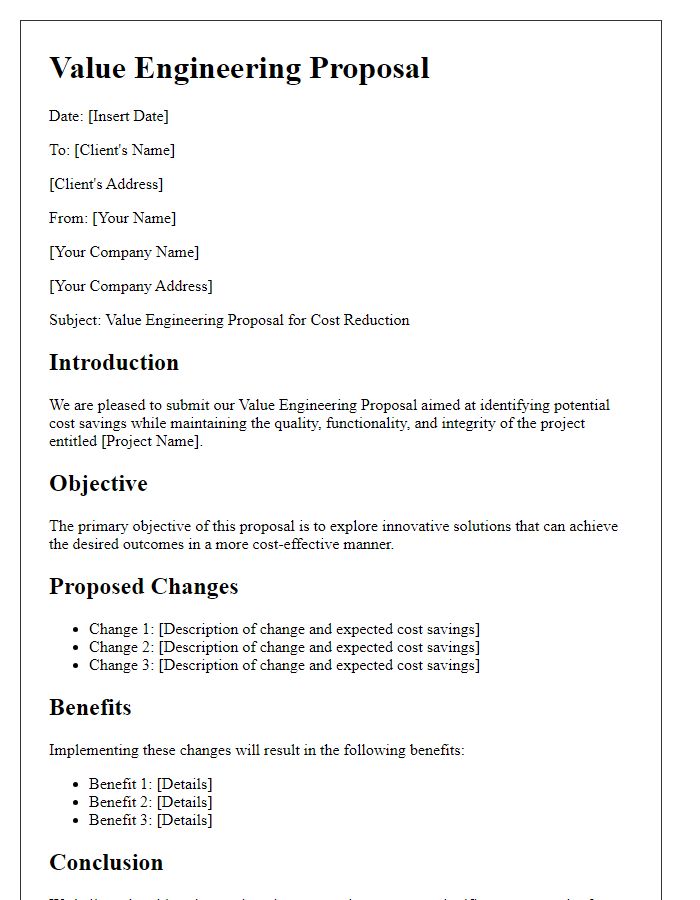
Letter template of contractor value engineering proposal for project efficiency enhancement.
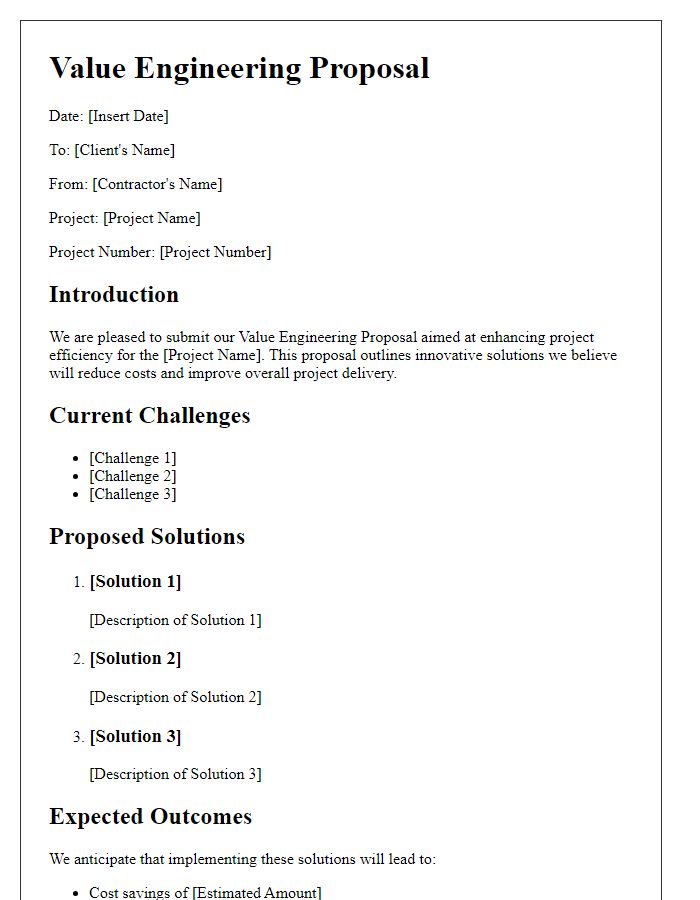
Letter template of contractor value engineering proposal for sustainability improvements.
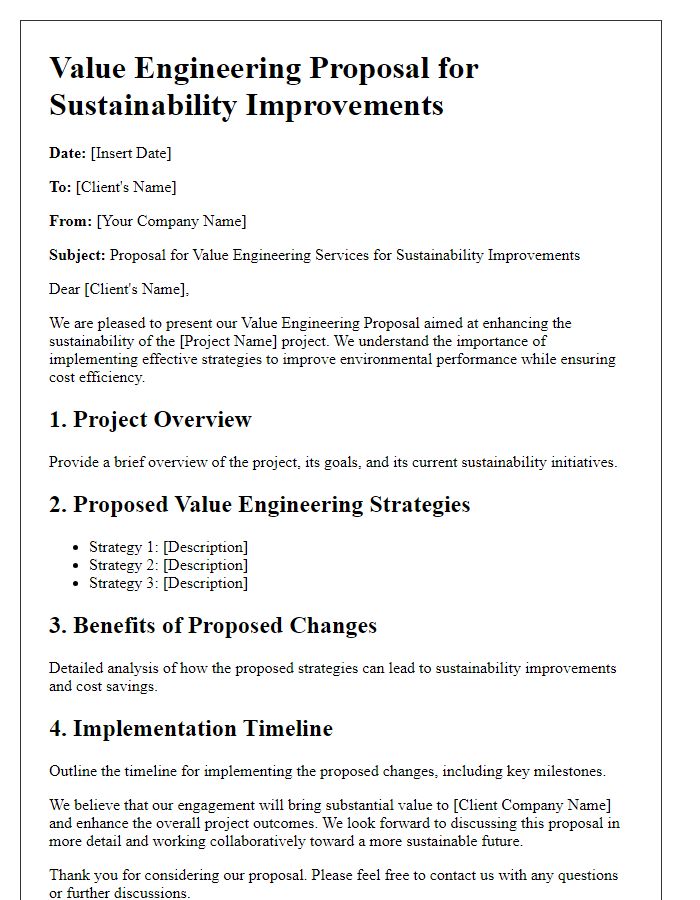
Letter template of contractor value engineering proposal for materials optimization.
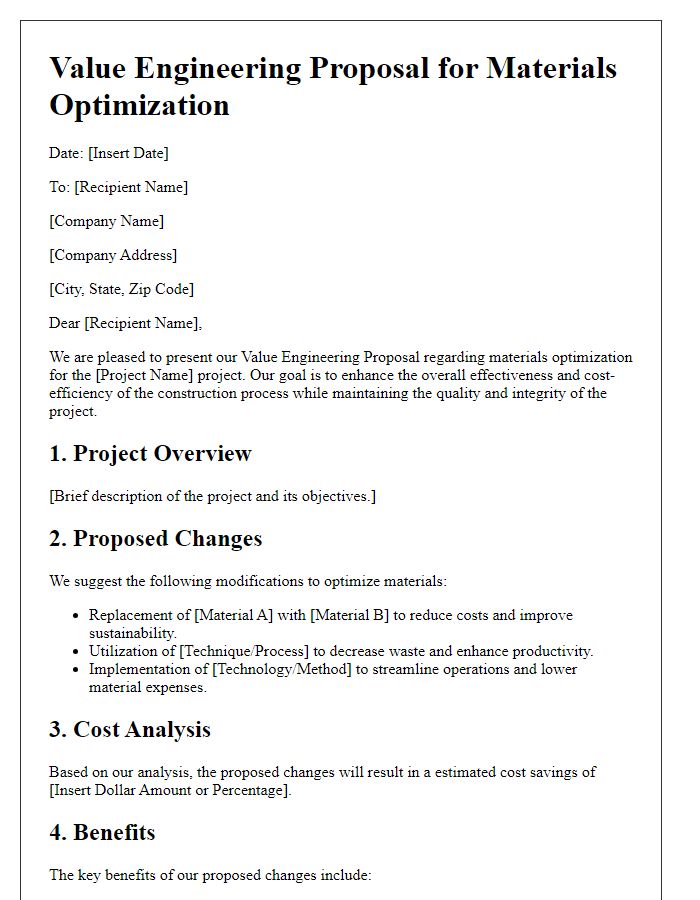
Letter template of contractor value engineering proposal for time-saving strategies.
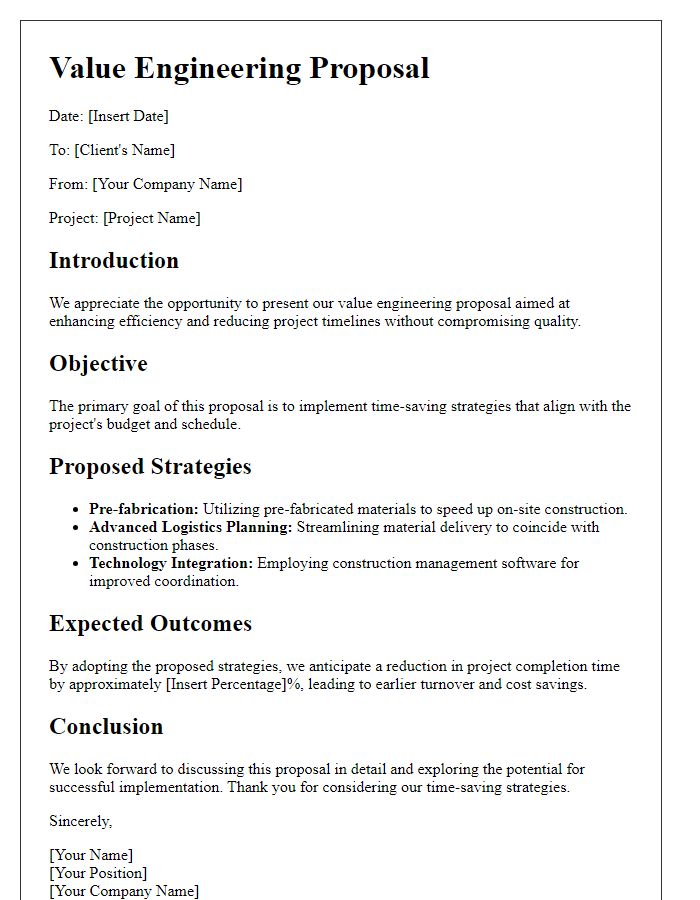
Letter template of contractor value engineering proposal for risk management solutions.
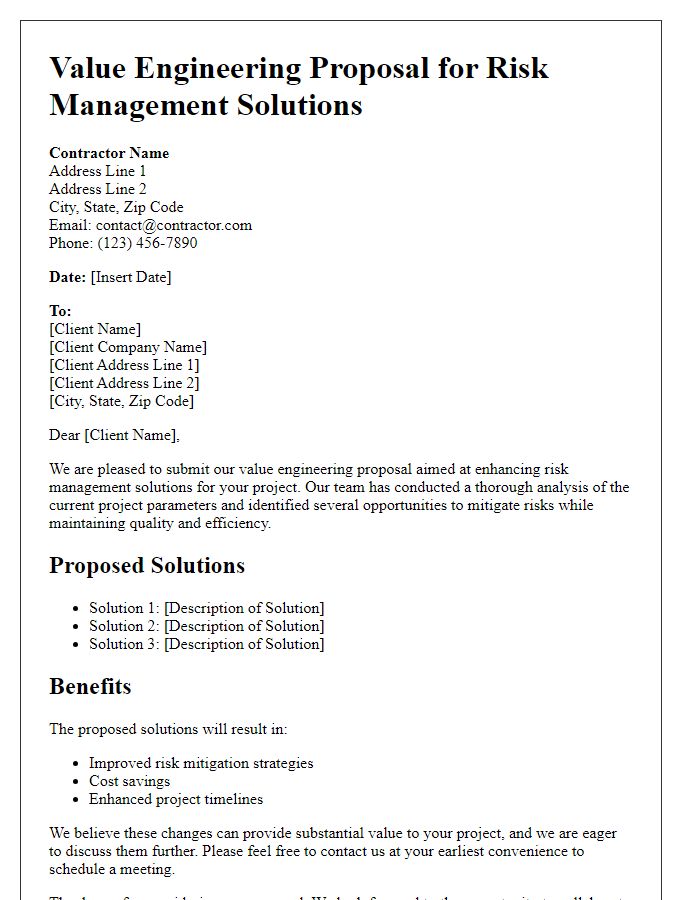
Letter template of contractor value engineering proposal for design alterations.
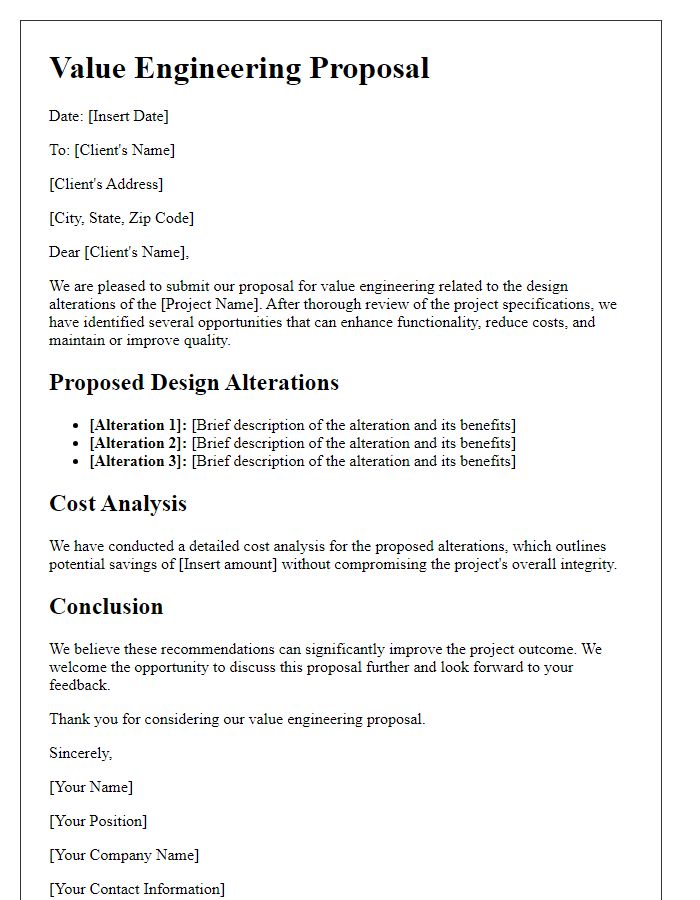
Letter template of contractor value engineering proposal for improved construction methods.
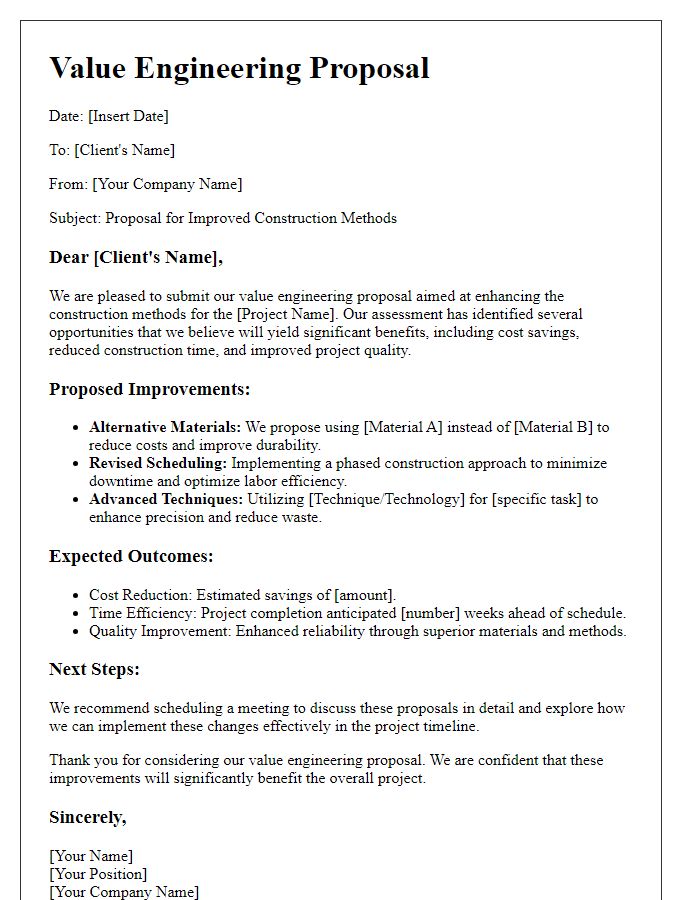
Letter template of contractor value engineering proposal for client collaboration enhancement.
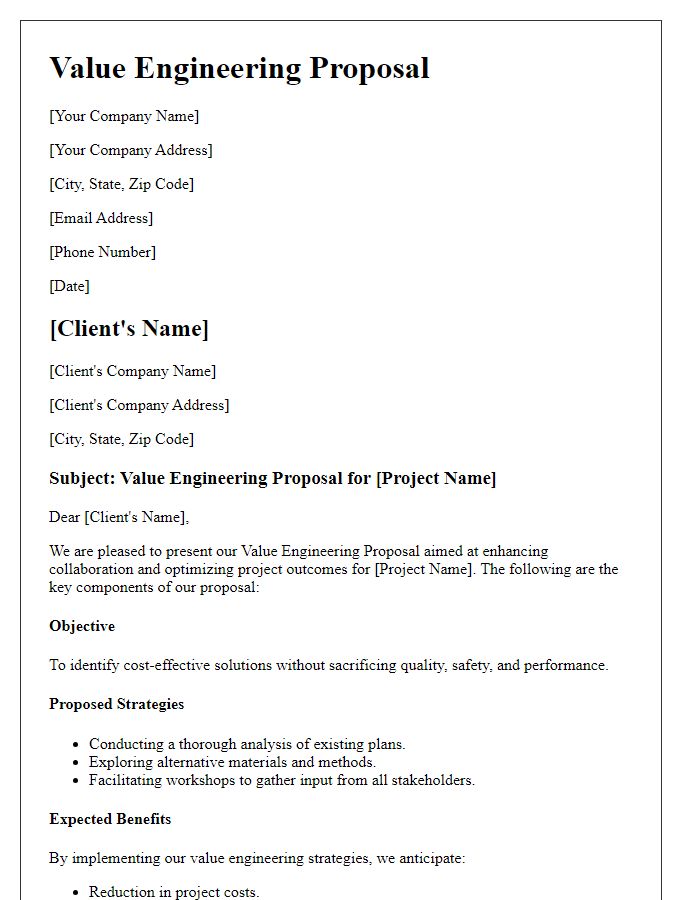

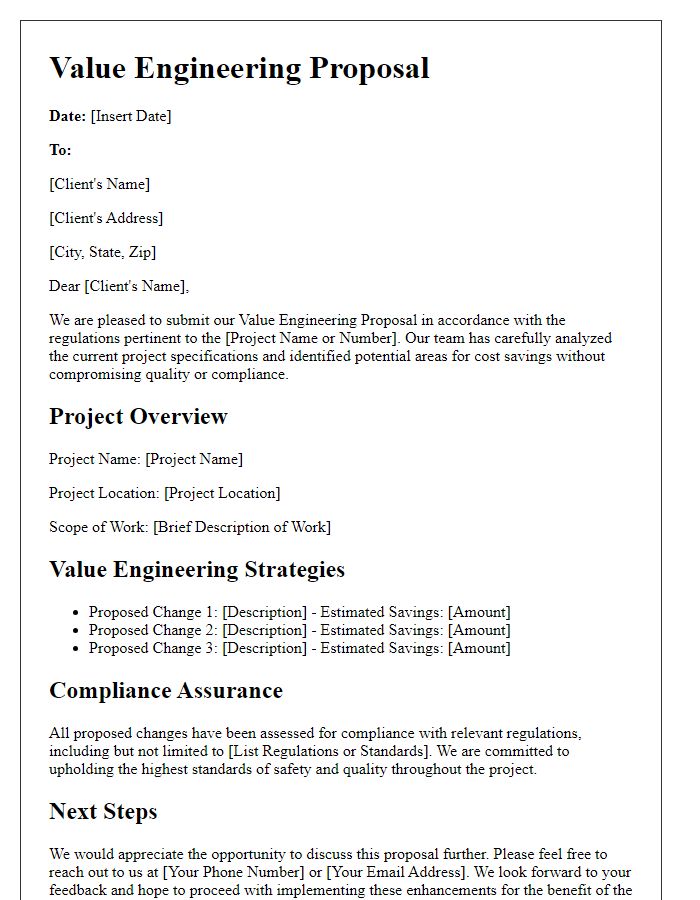

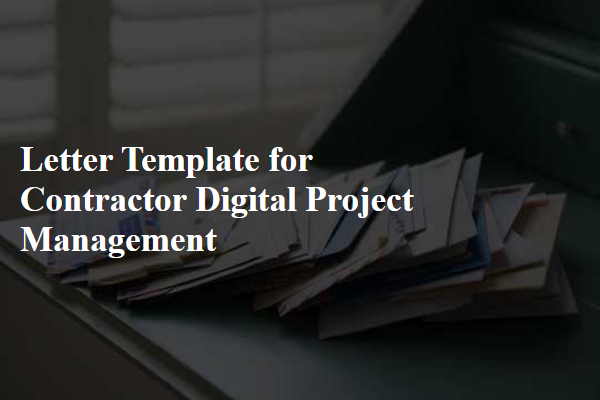
Comments